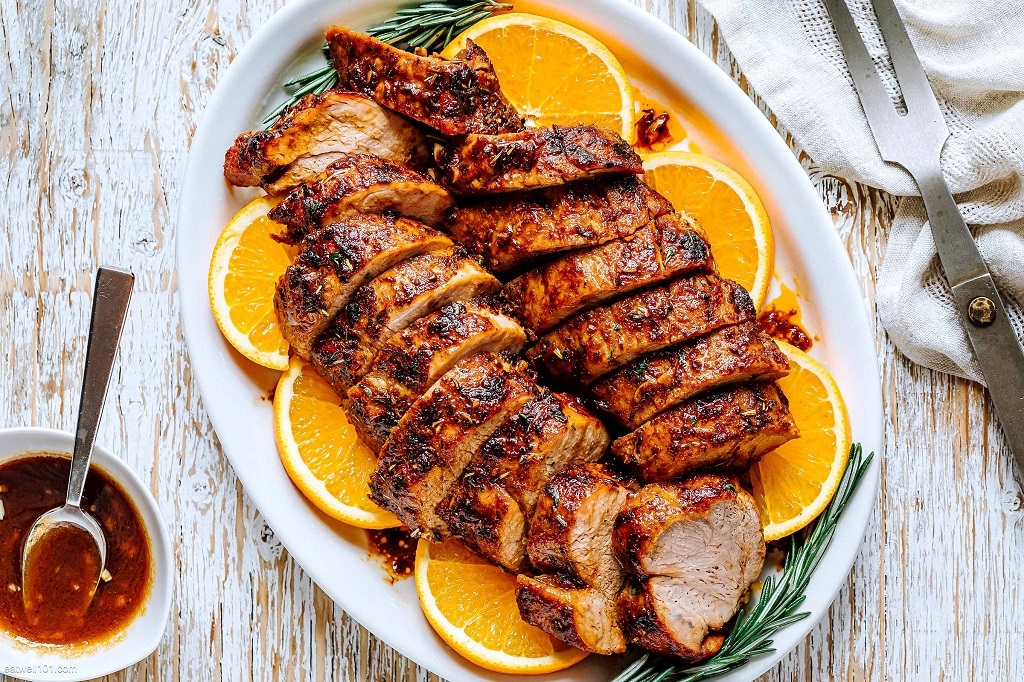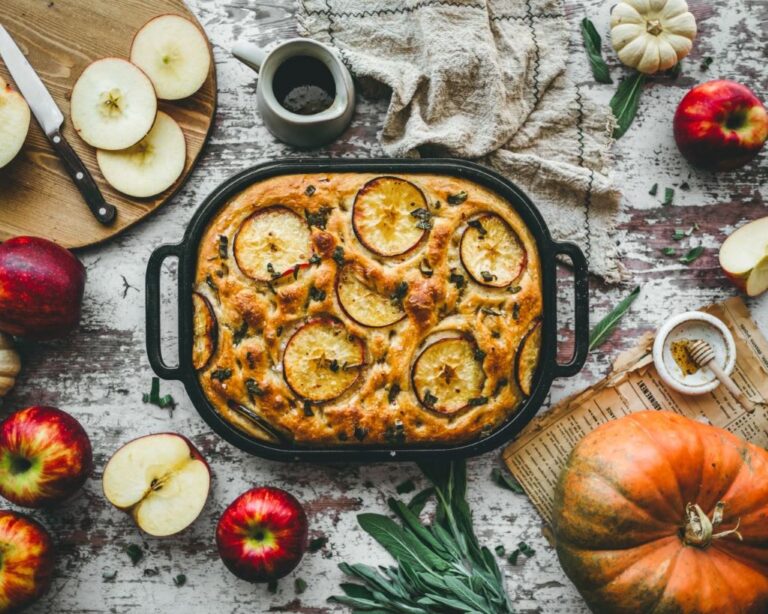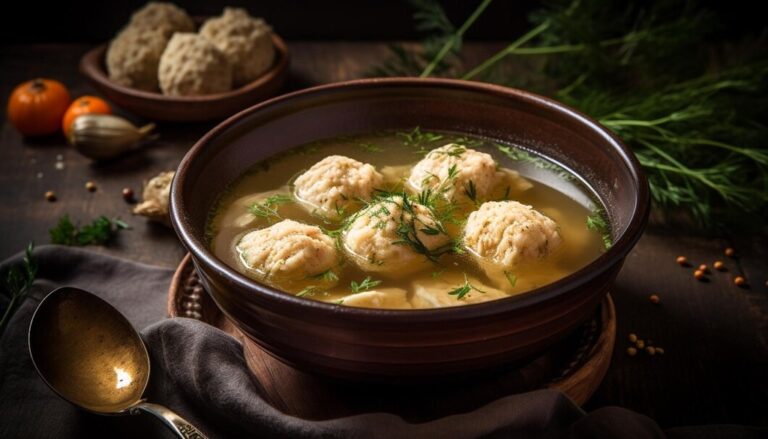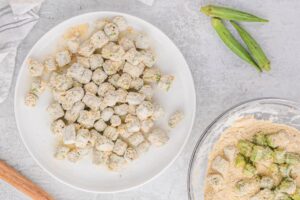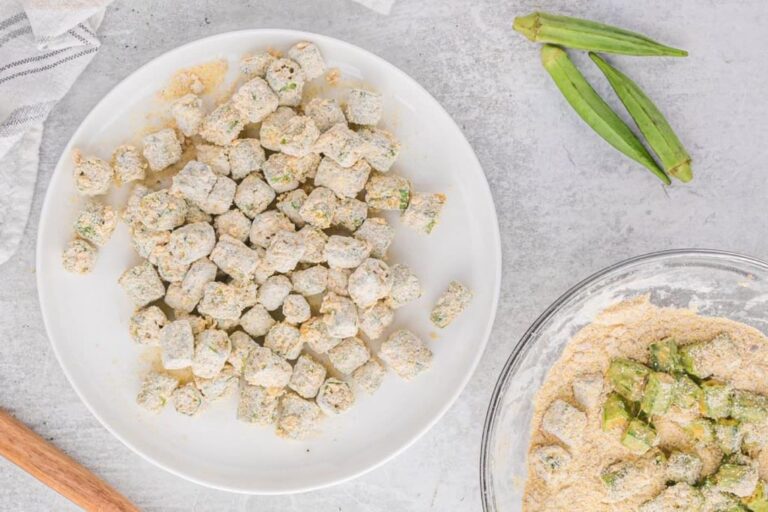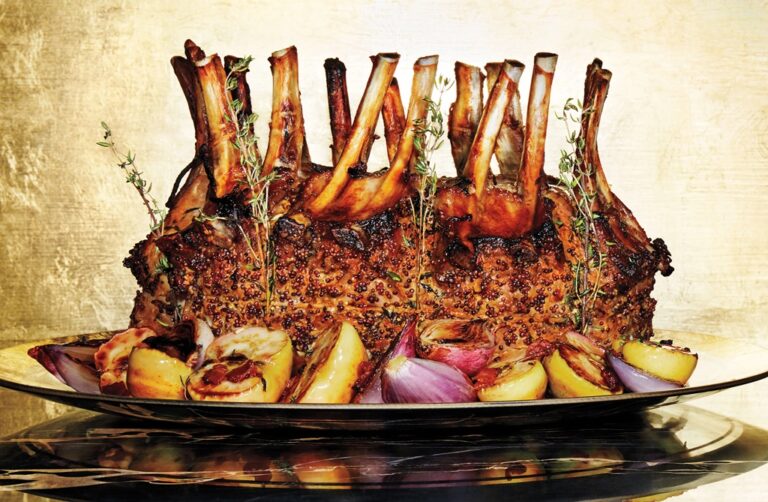To cook a pork loin roast, preheat the oven to 350°F and season the roast with salt, pepper, and any desired herbs. Place the roast on a baking sheet for about 20 minutes per pound or until the internal temperature reaches 145°F.
Rest the roast for 10 minutes before carving and serving. Cooking a pork loin roast can be a delicious and satisfying meal. With a few simple steps, you can create a mouthwatering roast that is tender and flavorful.
Whether you’re preparing a roast for a special occasion or a weeknight dinner, knowing how to cook it properly is essential, especially when you’re aiming for food with kid appeal. We will guide you through cooking a pork loin roast to perfection, from seasoning to resting. With our easy-to-follow instructions, you can confidently prepare a succulent pork loin roast that will impress your family and friends and delight the younger ones. So, let’s get started and embark on a culinary adventure!
Selecting The Pork Loin
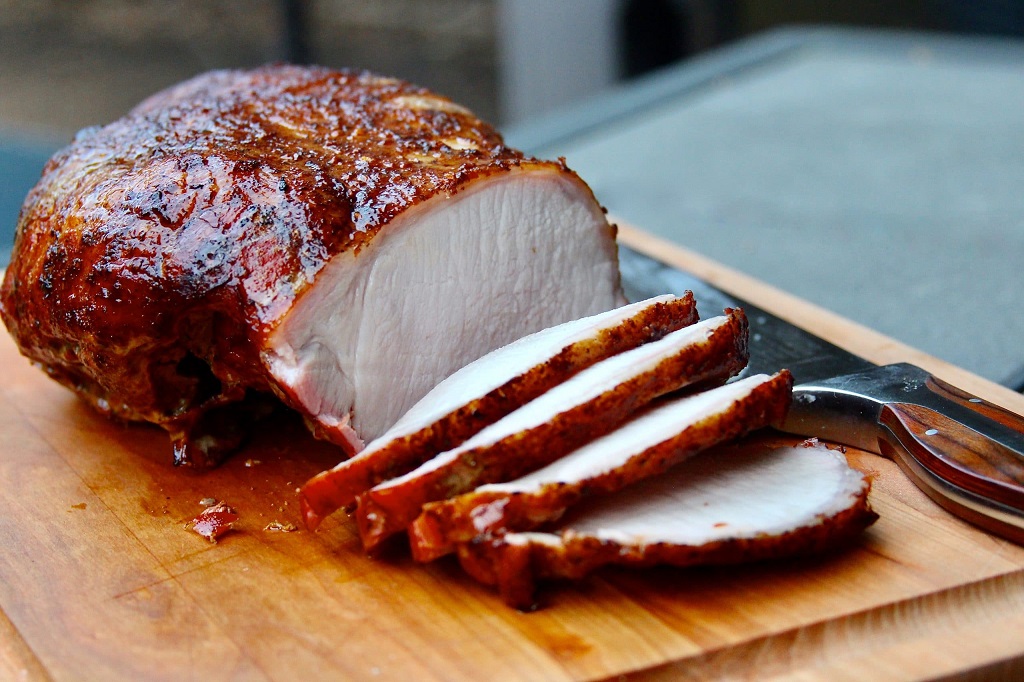
When it comes to cooking a delicious pork loin roast, including a sous vide pork loin roast, selecting the right cut of meat is crucial. The quality and freshness of the pork loin will greatly influence the outcome of your dish. In this section, we will explore the key factors to consider when choosing a pork loin: freshness and quality, and the decision between bone-in vs boneless. These considerations are particularly important in sous vide cooking, as they can affect both the flavor and texture of the meat. Let’s delve into these aspects to ensure you select the best possible pork loin for your culinary creation.
Freshness And Quality
When selecting a pork loin for your roast, freshness and quality should be of utmost importance. Fresh pork loin will have a vibrant pink color and firm texture. It should not have a strong odor or feel slimy to the touch. Neither should it have any discoloration.
A good indicator of quality is marbling, which refers to the thin streaks of fat running through the meat. Marbling adds flavor and juiciness to the pork loin roast. Look for a cut with moderate marbling, as excessive fat can result in an overly greasy roast.
If possible, choose pork loin from animals that have been raised in a natural or organic environment. This ensures the meat is free from hormones, antibiotics, and other unwanted substances that may affect the taste and quality of the roast.
Bone-in Vs. Boneless
The decision between bone-in and boneless pork loin largely depends on personal preference and cooking methods. Both options have their advantages.
| Bone-In | Boneless |
| Retains moisture during cooking | Easier to carve |
| Enhances flavor due to bone marrow | Cooks more evenly |
| May require a longer cooking time | Can be stuffed or rolled |
If you prefer a juicier and more flavorful roast, opt for a bone-in pork loin. The bone helps retain moisture and adds extra flavor to the meat. The downside is that it may require slightly longer cooking time.
On the other hand, a boneless pork loin is easier to carve and cook more evenly. It also provides the flexibility to stuff or roll the meat, allowing you to experiment with different flavors and fillings.
By carefully selecting a fresh and high-quality pork loin, as well as considering whether to choose bone-in or boneless, you can ensure a mouthwatering pork loin roast that will have your family and friends coming back for seconds.
Preparation And Seasoning
To cook a pork loin roast, start by preparing and seasoning the meat with your favorite herbs and spices. Allow it to marinate for a few hours or overnight for maximum flavor. Then, follow a proper cooking method to achieve a juicy and tender roast.
Trimming And Tying
Trimming and tying the pork loin roast is an essential step in achieving an evenly cooked and aesthetically pleasing dish. To begin, carefully inspect the roast for any excess fat or silver skin. These tough and chewy portions can hinder the flavors from penetrating the meat and result in an unpleasant texture. Use a sharp knife to trim away the fat and silver skin, leaving a thin layer of fat intact to enhance the juiciness of the roast. After trimming, you may notice that the pork loin is uneven in shape.
To ensure even cooking, tie the roast using butcher’s twine. Start by placing the twine under the roast, then cross the ends over the top, bringing them back under the roast and tying them tightly together. This process will help the roast maintain its shape during cooking and prevent any parts from cooking faster than others.
Seasoning And Flavoring
The right seasoning and flavoring are crucial in elevating the taste profile of the pork loin roast. Before applying any seasoning, ensure that the meat is patted dry with paper towels. This step allows for better adhesion of the flavors. Now, it’s time to create a delicious and balanced seasoning blend. An ideal mix usually includes a combination of spices like salt, black pepper, garlic powder, and herbs such as rosemary or thyme. It’s important not to overpower the natural flavor of the pork, so use seasonings in moderation. Rub the seasoning mixture evenly onto all sides of the pork loin, making sure to press it into the meat for optimal flavor absorption. For an added burst of taste, consider marinating the pork loin overnight in a mixture of olive oil, soy sauce, and your favorite aromatics.
This will infuse the meat with additional flavor and tenderize it further. Remember, the longer you marinate, the more robust the flavors will be. With these simple yet essential steps, you are now ready to proceed to the cooking process, where the pork loin will transform into a savory masterpiece.
Cooking Techniques
When it comes to cooking a pork loin roast, mastering the cooking techniques is essential to ensure a delicious and perfectly cooked dish. From the roasting method to using a meat thermometer, understanding the proper techniques can take your pork loin roast to the next level.
Roasting Method
To cook a pork loin roast using the roasting method, start by preheating the oven to 350°F. Place the roast in a roasting pan, fat side up. Season the roast with salt, pepper, and any desired herbs or spices. Roast the pork loin until it reaches an internal temperature of 145°F, which usually takes about 20 minutes per pound. Let the roast rest for a few minutes before slicing and serving.
Using A Meat Thermometer
Using a meat thermometer is crucial for ensuring that the pork loin roast is cooked to the perfect temperature. Insert the thermometer into the thickest part of the roast, making sure not to touch any bone. The USDA recommends cooking pork to a minimum internal temperature of 145°F. Once the pork reaches this temperature, remove it from the oven and allow it to rest for at least 3 minutes before serving.
Resting And Carving
Resting and carving are critical steps in preparing a delicious and flavorful pork loin roast. A properly rested and expertly carved roast can make all the difference in a memorable dining experience. In this section, we will shed light on the importance of allowing the roast to rest and share some helpful tips on how to carve it like a pro.
Resting Period
Before you dive into slicing your perfectly cooked pork loin roast, it is essential to allow it to rest. Resting allows the juices to redistribute throughout the meat, resulting in a juicier and more tender roast. During the cooking process, the heat causes the juices to move towards the center of the roast. Resting helps the juices settle back into the fibers, ensuring each slice is full of flavor.
To rest your roast properly, follow these simple steps:
- Remove the pork loin roast from the oven or grill once it reaches the desired internal temperature, usually around 145°F (63°C).
- Transfer the roast to a cutting board or serving platter.
- Cover it loosely with aluminum foil to retain the heat. This also helps to keep the roast moist throughout the resting process.
- Let the roast rest for at least 10 to 15 minutes. This resting period allows the internal temperature to stabilize while giving the meat time to reabsorb the juices.
By patiently waiting for the resting period to complete, you’ll be rewarded with a perfectly juicy pork loin roast that is ready to be carved.
Carving Tips
To ensure your pork loin roast is sliced beautifully, follow these helpful carving tips:
- Use a sharp carving knife or a serrated knife to make clean and precise cuts. This will help maintain the presentation and texture of each slice.
- Start by slicing across the grain of the meat, cutting it into 1/2-inch to 3/4-inch thick pieces. Slicing against the grain makes the meat more tender and easier to chew.
- For an even distribution of flavors, consider slicing the roast into individual portions rather than carving the entire roast at once. This allows each person to enjoy their desired portion size.
Remember, the way you carve your pork loin roast can significantly impact its taste and texture. By following these simple yet effective carving tips, you’ll be able to serve up succulent slices to everyone at the dinner table!
Serving And Pairing
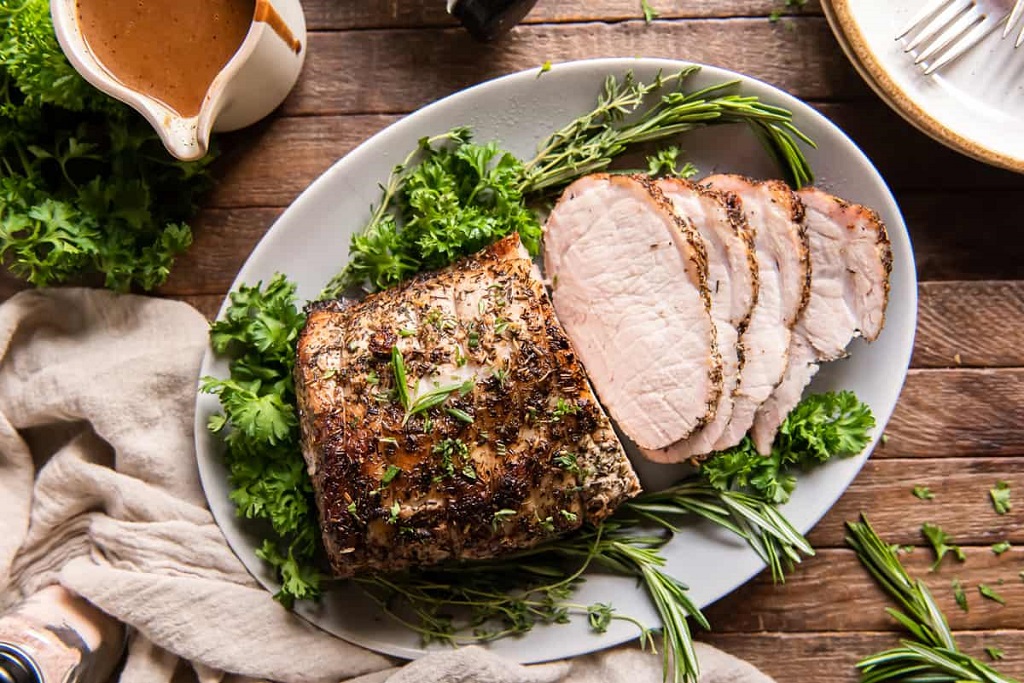
Discover the perfect way to cook a pork loin roast with these expert tips on serving and pairing. From seasoning to temperature, this guide will ensure a delicious result every time.
Presentation Ideas
When it comes to serving a delicious pork loin roast, the presentation can make a big difference in enhancing the overall dining experience. By taking a little extra time to think about how you present the roast, you can impress your guests visually and elevate the enjoyment of the meal.
1. Simple and Elegant
A simple and elegant presentation can be achieved by placing the pork loin roast on a beautifully decorated platter. Garnish the platter with fresh herbs like rosemary or thyme for a pop of color and added fragrance. This clean and sophisticated presentation allows the flavors of the pork to take center stage.
2. Rustic and Cozy
If you prefer a more rustic and cozy presentation, consider serving the pork loin roast on a wooden cutting board or in a cast iron skillet. This gives the dish a homely and inviting feel, perfect for a casual gathering or a family meal. You can even add some roasted vegetables or potatoes around the roast to complete the rustic look.
3. Asian Inspired
For a unique twist, you can take inspiration from Asian cuisine and serve the pork loin roast sliced and arranged on a bed of steamed jasmine rice. Drizzle the roast with a tangy soy-ginger glaze and garnish with chopped scallions and sesame seeds. This presentation not only looks beautiful but also adds a burst of savory and aromatic flavors to the dish.
Perfect Side Dishes
Pairing your pork loin roast with complementary side dishes is crucial to create a well-balanced and satisfying meal. Here are some ideas for side dishes that will elevate the flavors of your pork roast:
1. Creamy Mashed Potatoes
There’s nothing quite like the creamy goodness of mashed potatoes to accompany a juicy pork loin roast. Its smooth texture and buttery flavor complement the richness of the meat perfectly. Serve the mashed potatoes as a bed for the sliced roast or as a side dish on its own.
2. Roasted Vegetables
Roasted vegetables are a healthy and colorful addition to your pork loin roast. Toss a variety of vegetables like carrots, Brussels sprouts, and bell peppers with olive oil, salt, and pepper. Roast them in the oven until they are tender and slightly caramelized. The sweetness of the roasted vegetables pairs well with the savory flavors of the pork roast.
3. Tangy Cranberry Sauce
A tangy cranberry sauce adds a burst of flavor and a touch of sweetness to the pork loin roast. Its vibrant color also makes it visually appealing. You can make your cranberry sauce by simmering fresh cranberries with sugar, orange zest, and a splash of lemon juice. The contrast between the tartness of the cranberries and the richness of the pork is truly delightful. In addition to these side dishes, you can also serve a fresh green salad or a light and refreshing coleslaw to balance out the richness of the pork roast. Experiment with different flavors and textures to find the perfect pairing for your pork loin roast. Remember, the side dishes should complement the flavors of the roast and enhance the overall dining experience for you and your guests.
Frequently Asked Questions On How To Cook A Pork Loin Roast
How Long Do You Cook A Pork Loin Roast?
Cook a pork loin roast for about 20 minutes per pound at an oven temperature of 350°F. Use a meat thermometer to ensure it reaches an internal temperature of 145°F. Let it rest for 10 minutes before slicing for juiciness.
What Temperature Should A Pork Loin Roast Be Cooked To?
Cook a pork loin roast until it reaches an internal temperature of 145°F. This ensures the meat is cooked thoroughly, yet stays juicy and flavorful. Using a meat thermometer is the best way to ensure accurate temperature readings.
What Are Some Flavorful Marinades For A Pork Loin Roast?
Marinating a pork loin roast adds delicious flavor. Try marinades like honey mustard, garlic herb, balsamic soy, or maple Dijon. For maximum taste, place the roast and marinade in a sealed bag in the refrigerator for at least 2 hours or overnight.
Conclusion
Cooking a pork loin roast is a rewarding culinary endeavor. Following the steps outlined in this blog post, Explore these fifteen cooking tips every chef should know, and with the right techniques, you can easily create a flavorful and tender dish that will impress your family and friends.With the right preparation and cooking techniques, you can elevate this classic cut of meat into a delicious and satisfying meal.

